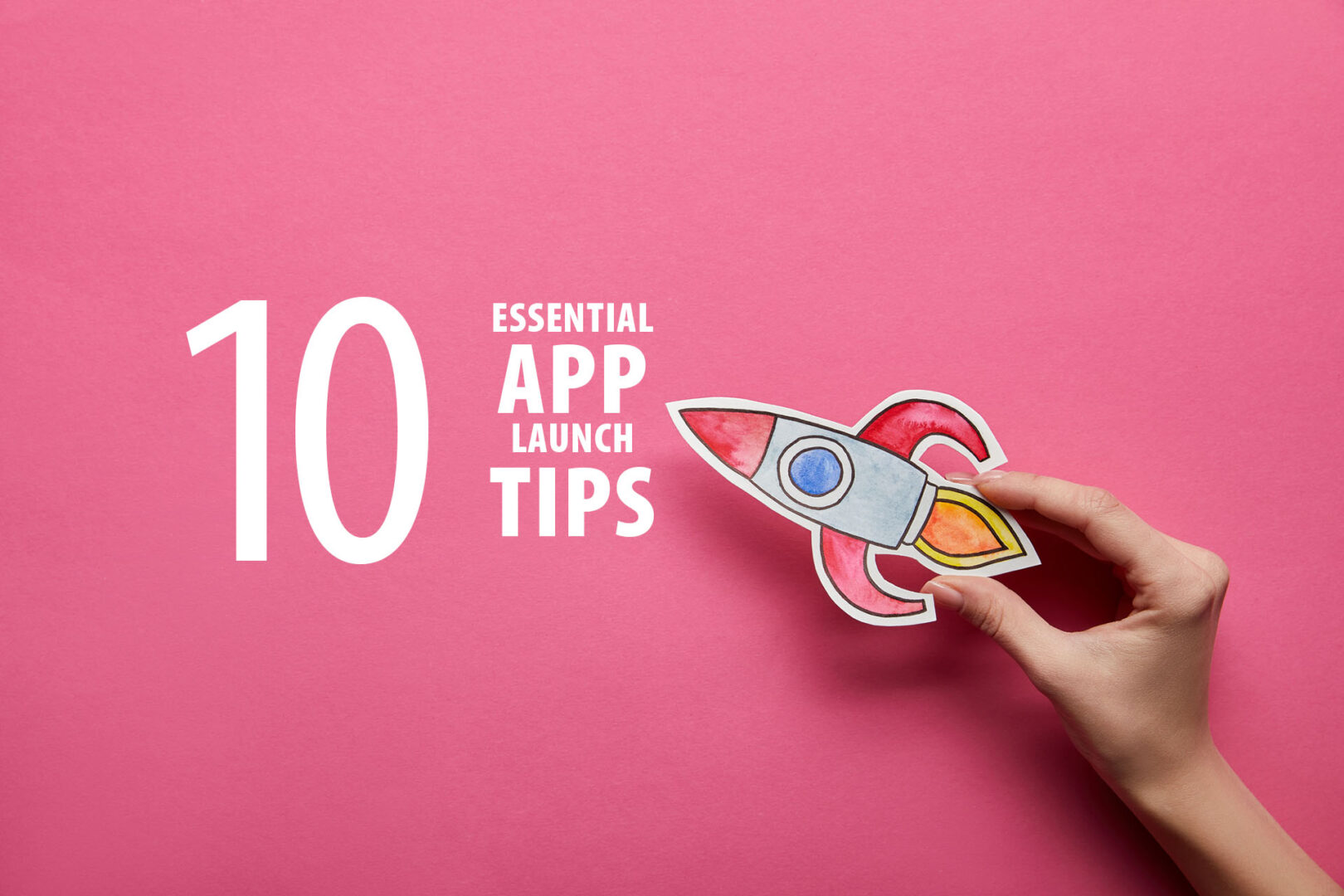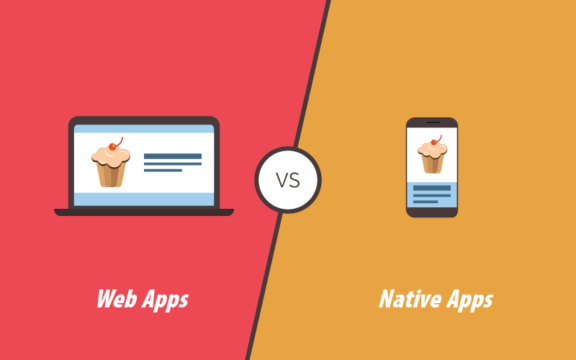Here are our Top 10 essential app launch tips. These are tips we’ve learned the hard way, so you don’t have to. Read this before you launch your app.
Here’s the scenario. You’ve been working on your latest digital offering for months, and you’re super proud of it. You’ve had some good initial feedback from those you have deemed worthy to witness your labours. Now the time has come to release your baby into the big wide world. You picked a launch day that seemed so far away when you started. But that day is now upon us!
You are super excited and nervous to discover what ‘real people will make of it. You are planning on having a nice drink to celebrate after the launch. Hot Bovril, perhaps? But before that, anxiety kicks in. You get that nagging feeling: “did I forget something”?

Not got time to read the whole article? Here’s the Tl;dr summary:
If you are about to launch your app, try to keep calm and take a deep breath. Put on your lucky pants and have a brew. Ask yourself, what’s the worst-case scenario? It’s probably not that bad, is it? Work out a plan from there. And most importantly, don’t sweat the small stuff.
Good luck.
- Tip 1: Bugs Happen. Only Worry About The Showstoppers.
- Tip 2: Check Your Deployment Process Works
- Tip 3: Check Payment Gateways Are Set Up Correctly.
- Tip 4: Switch To Production API Keys.
- Tip 5: Manually check features are working.
- Tip 6: Backup. Backup. Backup.
- Tip 7: Set Up and Configure Analytics.
- Tip 8: Make It Easy For People To Give Feedback.
- Tip 9: Gently Open The Floodgates.
- Tip 10: Make sure people can find your app.
- (Bonus Tip): Look after yourself and your team.
- Final Thoughts
Tip 1: Bugs Happen. Only Worry About The Showstoppers.
Bugs happen. Everyone hates bugs, especially your users, so yes, you should fix them. But not all bugs are equal. Bugs can range in severity from “that text looks a bit too small” to “everything is on fire”.
A great developer I once worked with used to say:
“There are bugs and then there are show stoppers.”
A Showstopper is a bug that is so extreme that it must be fixed immediately! In apps, a Showstopper is something that prevents the user from carrying out the core function of the app. For example, if users can’t log in — that would be a Showstopper.
Identifying potential Showstoppers will depend on the functionality of your app. The simplest way is to go through your app’s product requirements and look at each feature. Ask: “what is the worst-case scenario if this feature does not work?”
You can then log any potential Showstoppers in a document known as a Risk Register. You can also document the steps taken to manage the risk. Life is so much less stressful when the risks are documented, and there’s a plan to deal with them.
Fun Fact: Bugs are nothing new. The word “bugs” to describe technical issues was first used in mechanical engineering. The earliest documented use was by Thomas Eddison in 1878.
Tip 2: Check Your Deployment Process Works
After launch, you will be fixing bugs and issues. It’s important to have a seamless process for getting these fixes to your users.
Deploying updates for native mobile apps can be an awkward process. It usually involves some manual steps, with some delay between upload and release. This is especially true with iOS apps, where humans approve updates before release.
For SaaS (Software as a Service) apps, the deployment is much faster. Most modern development workflows revolve around CD (Continuous Deployment). Not only saving time but also avoiding the hellish mess of uploading files with FTP (File Transfer Protocol).
One gotcha of most SaaS apps is the cache. Make sure there is a working mechanism for busting the cache. A bug in front-end code that is only fixed by pressing a magic combination of keys to clear the browser cache is not cool. This is a UX (User eXperience) failure.
If you or your developers are still using FTP for deploying your code, look into using version control. A version control system like Git will save you many headaches and make you more efficient. It’s easy to get set up with an off-the-shelf solution like GitHub or Bitbucket.
Also, if you or your app developers are deploying the same code to more than one server, using an automated deployment tool is a good idea. If you are new to CD, here is a list of 21 CD Tools.
Tip 3: Check Payment Gateways Are Set Up Correctly.

If you’re running a SaaS platform, selling products, or offering in-app purchases, you want to get paid. So, make sure everything is set up and working correctly for taking payments. This is surprisingly easy to neglect.
Most payment processors will let you integrate with their service using test credentials. The problem is when it comes to making the integration live, you need a different set of credentials. Often the live integration will need approval from the provider — which can take time. And cause delays if not planned for.
The main gotcha of payment integrations are settings between live and testing setups. Often a simple checkbox option can prevent the entire live integration from working. So, even if you have checked your payment integration with test credentials. I always recommend switching to live credentials and putting a real payment through. You can always refund it later.
Tip 4: Switch To Production API Keys.
Most apps have some integration with a third-party service. These services can provide functionality ranging from sending emails to processing payments.
To allow your app access these services need you to provide your API key. A lot of services offer two sets of credentials; one for testing and one for the live environment. So before your app launches, make sure you are using the live API keys in production.
By the same token, if your app sends messages. Make sure they will go to the user and not somewhere else. We don’t want to bombard Nigel from accounts now, do we?
Tip 5: Manually check features are working.
Before you invite everyone to sign up for your app, make sure all the features are working as expected.
Although you may have been testing your app with automated tools throughout development. They do exactly what you tell them every time. That’s not human!
Humans are different to robots — they are great at finding new ways to break your app. For this reason, I ask real people to test the app before launch. That’s usually in the live environment, with live credentials. For peace of mind, if nothing else.
It’s best to have a test plan for the human beings who will be testing. An easy way to do this is to take the user stories from the product requirements and put them into a spreadsheet. Then add columns for recording feedback and whether the test passed or failed.
When you are looking for testers, having one or two friendly people who have not worked on your project is ideal. A lack of involvement eliminates the bias of knowing how things should work already. So they are more like real customers.
One area to test and retest is the signup/login process. Make sure it is working as expected. A broken signup process will ensure no one will sign up. No signups – no users. No users, no revenue.
Tip 6: Backup. Backup. Backup.
The only time you wish you had a backup is when it’s too late. In the digital world, backups are essential. Here are the three most important things to back up.
Backup Your App’s Code
All app source code should be stored in a hosted version control system. I would recommend using an off-the-shelf solution like Bitbucket, GitHub or Gitlab. Using a system like this will keep your precious source code safe. Not to mention all the other benefits source control brings.
Backup Your Documents & Documentation
You may already be backing up your documents in some way. And while making apps, it’s common to produce a lot of documentation. Ranging from graphic source files from Illustrator and Photoshop. To the more mundane spreadsheets and word docs. Naturally, these should all be backed up too.
Services like Dropbox and Google Drive are ideal for storing these types of assets. You will also have the added bonus of being able to track file changes and control who has access to them.
Backup Your App’s Database
Most apps have a database-powered backend. At the low end, this may be a single tiny cloud server instance running a MySQL database. A higher-end solution may be a database cluster with replication across the globe.
The low-end database setup option may be necessary if you are on a tight budget. But make sure you have an automated system to backup it up. A simple automated backup system could be a script that takes a dump of the database and then saves it to a secure file server at regular intervals.
The high-end solution is more achievable than ever with Google Cloud or AWS. They allow for robust, complex configurations with very little effort. The downside is that this can be expensive when starting off. Then again, can you put a price on your users’ data?
Tip 7: Set Up and Configure Analytics.

Let’s face it, most of us are deluded. This is even more true for entrepreneurs. Far from being a detractor, this delusion is essential to being an entrepreneur. Steve Jobs was famous for having a “reality distortion field”. Elon Musk is famous for setting wildly ambitious goals. And Coco Chanel built a world-famous fashion house, despite it being illegal for her to own it.
Delusion is vital to building a startup in the early days. Entrepreneurs must believe in what they are doing and convince other people to join them. This is despite no hard evidence.
Unfortunately, delusion is a double-edged sword. Although useful when starting out, it can be disastrous when working out how to grow a startup. Nothing destroys delusion quicker than hard evidence. This is where analytics comes in.
Analytics are measurements of data that can be analysed to give statistical insights. The key insights we want are how people are using your app and how your business is performing.
The famous management consultant Peter Ducker* said:
“What gets measured, gets managed”.
In other words, you need to collect data on what is important so that you can act upon it. And what’s important will depend a lot on your app, but in general, the truly important metrics are called AARRR.
AARRR, not only the cry of a vexed pirate. AARRR metrics stand for Acquisition, Activation, Retention, Referral and Revenue. Why are these metrics so important? Because they represent actionable steps to unlocking your startup’s growth.
AARRR metrics will help you answer the following questions?
- Acquisition — How are you attracting users?
- Activation — Are new users having a good first experience?
- Retention — Are existing users coming back, or are you churning through them?
- Referral — How can you encourage users to tell their friends about your app?
- Revenue — How can you increase your revenue?
At a practical level, make sure you are using some form of analytics software. It’s best to have this in place from the first time real users interact with your product.
For SASS apps, Google Analytics and Hotjar will cover the basics. While flurry and Mixpanel are popular analytics solutions for mobile. Your analytics software will need to be set up to track any important actions a user can take. This could include signup, login, sending a message, pressing a button, or swiping right.
Once you are collecting analytics data, you can build reports to track the AARRR metrics. You may need to use a custom reporting tool like Google Data Studio to do this. If you have the budget, you could also hire a freelance data scientist to help.
If you’re interested in reading more about startup metrics, I highly recommend the book Lean Analytics by Alistair Croll and Benjamin Yoskovitz, available here on Amazon.
*Fun Fact: Peter Ducker may not have been the original source of the quote, but most people attribute it to him.
Tip 8: Make It Easy For People To Give Feedback.

Beyond the numbers you gather from analytics, you also need feedback from real users. Feedback from real people is the most important tool in developing your digital product. While analytics will tell you what users are doing, feedback will tell you why they are doing it.
Less than 1% of users will give feedback without you asking. But this feedback is usually biased and comes when something goes wrong. This sort of feedback can still have value for fixing issues but isn’t so good when informing the direction of your product.
The best way to get useful feedback from users is to ask for it and make it easy for them to give it. There is more than one way to collect this feedback. You could integrate a live chatbot into your product that lets you capture user feedback without needing them to leave your app. Or, if you’re feeling brave, send an email or pick up the phone and speak to a user.
Did I say phone? Yes, phone. They’re not only for sending friends pictures of your food. There have been many startups saved by simply picking up the phone and dialling customers. Even the multi-billion dollar app Uber started by making cold calls.
Mark Cuban, the owner of the basketball team Dallas Mavericks, helped save the team by cold calling. After purchasing the Mavericks in 2000, he set about revitalising the team. One of the first things Mark did was cold-call former season ticket holders to invite them back to games. He was already a billionaire at this point. He could have hired people to make the calls for him. Why did Mark Cuban make the calls himself? Because he cared passionately about making The Mavericks successful again.
While calling isn’t for everyone, it is a learnable skill. If you can pick up the phone and have a conversation with a friend — you have enough raw talent. All it takes to get good is a little coaching and a lot of practice.
So, if people are signing up for your app but not actually using it — pick up the phone and find out why. Or, if you are generating leads but no one’s following up — don’t leave them hanging. And if you are as passionate about your business as Mark Cuban, talk to your customers. Without them, you don’t have a business.
Tip 9: Gently Open The Floodgates.
When you launch your app, it can be tempting to go for a big marketing push on the first day. While this can sometimes pay off, it is super risky.
Big launches are risky for two reasons. First, it’s difficult to accurately estimate how long it takes to build software, so if you tee up a big launch, your app might not be ready. Second, there are always bugs with new apps, and driving lots of people to a broken, buggy product will lead to negative reactions, which will put off new users from signing up.
Instead of a big launch, we recommend starting with what’s called a Soft Launch. A Soft Launch is where you invite a small selection of interested people to signup for your app over the first days after your app goes live.
Have you been building a mailing list or community alongside building your app? A soft launch could be perfect for giving your supporters some love by letting them be the first to sign up.
The benefits of Soft Launching your app include:
- Reduced risk — The people who will be signing up are already invested in the idea of your app. So, are likely to be more forgiving of bugs.
- Managing expectations — You can be open about the possibility of bugs.
- Cost-effective marketing — The people signing up are already interested. So you don’t have to spend time and money on advertising to convince them to sign up. These people are more likely to leave reviews and tell their friends about your app. (So long as it delivers a good experience, of course)
- Real analytics data — This period will give you valuable data on how real people are engaging with your app.
- Better resource estimates — As you onboard users, you will be able to track and measure the usage of resources. This may include the running cost of servers and time spent supporting customers.
After a successful Soft Launch, you can then opt to do an “official launch” with all the pizzazz you were holding back. Queue the cake and marching band!
Tip 10: Make sure people can find your app.
If you want people to use your app, they need to be able to find it. You may have a grand marketing plan for when you launch. That’s fine and dandy, but I have seen great marketing ideas fail because of simple mistakes. Here are the most common mistakes that make it impossible for people to find your app on different platforms:
Websites, Landing Pages & SaaS
Make sure people can access your landing page. Check from different devices, web browsers and IP addresses. Also, check any links you share are correct — all it takes is a click. By the same token, test what happens when someone types ‘www.’ before your web address.
Verify that you have hooked up your landing page to search engines such as Google. Also, check there are no crawling errors that prevent the indexing of your page using tools like Google Search Console or AHrefs.
Basic SEO (Search Engine Optimization) should also be carried out. This will include things like optimizing: page titles, meta descriptions and favicons. Beyond these basics, SEO can be monitored and improved over time.
Finally, make sure any testing platforms are not accessible by regular users. You don’t want people registering there. You can limit access with IP restrictions or user credentials.
Native Mobile On The App Store and Google Play
Native mobile apps will need to optimise their app store page. Optimizing helps your app rank higher in listings and be discovered by more users. This is known as ASO (App Store Optimization).
The key factors for improving your ASO are:
- Keywords: You need to know your target audience and the keywords they will use to search for apps like yours. There are various tools to help identify keywords. But sometimes, you will know them intuitively.
- Title: Ideally, the title should contain your main keyword. Although you can change it later, it’s better to have a strong title to start with.
Other ASO factors include the Number of Downloads, Ratings and Reviews. You can’t directly affect these factors. But you can work to encourage people to download your app or leave a review.
While not regarded as ASO, there are a couple of other things you should consider:
- App Description: Your app description is not indexed by the app stores, but it is still worth writing a good description with relevant keywords. This will help both humans and outside search engines understand what your app is.
- App Icon: A well-designed icon will help your app stand out from the crowd and help your app achieve more downloads. Both Apple and Android have best practice guidelines for how your icon should look. But, the Android Play Store is full of poorly designed icons. So it’s worth the investment.
- Screenshots: Most people prefer to look at pictures rather than read text. This makes screenshots an essential tool in efficient communicating what your app does. Screenshots must accurately reflect your app. You can add text to the screenshots, but it is best to stick with a short descriptive sentence near the top.
- Video: The promo video for your app is a great place to show off the key features. It should be highly focused on showing off your app’s hook. The ideal video length for Apple and Android is 30 seconds.
ASO is like SEO in that it is best to track and improve it over time. Don’t worry about getting it perfect the first time.
Messaging Apps & Social Media Platforms
Like SEO, if you are sharing your landing page via messaging apps, check it’s optimized. Often messaging apps display different images and text than you expect. You can check by sharing your link in whatever messaging app you will be sharing links to your app. I often use Slack, WhatsApp, and SMS. The same goes for any social platforms you will be sharing on, e.g. Twitter, Facebook or LinkedIn.
(Bonus Tip): Look after yourself and your team.

There’s the ten, but here is possibly the most important tip of all… get some rest the day before you launch your app, and put on your lucky underpants, no seriously.
Making a good app and continuing momentum after launch is like running a marathon. Then running another marathon straight after. Launching an app can be a slog and really stressful. It’s too easy to burn out. So look after yourself and your team so you can keep running.
Beyond this, a successful launch is largely down to planning, but luck plays its part too. So don’t forget those lucky pants!
Final Thoughts
Have you found these tips useful? Maybe you knew them all already — most seem common sense. Even so, it’s easy to neglect one or two.
When I started out building apps, I made every mistake on this list at some point. Having a list like this would have saved hundreds of hours of headaches and stress. Launching an app can be an anxious time. Hopefully, this list will help ease the pressure and give you less to worry about.
Are there any tips we missed that you feel I should have included? Contact us with your tip, and if we like it, I’ll add it to the list with a credit to you.
If you liked this post and would like to read the next one, please consider joining our email list. I guarantee there is a chance you will be satisfied and that my lucky underpants will probably be mentioned again.



